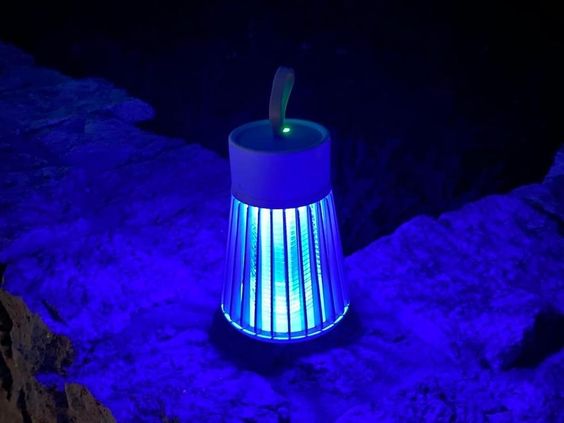
Mosquitoes are small, flying insects that are known for their irritating bites. However, their impact goes far beyond just being a nuisance. Mosquitoes are carriers of various diseases, including malaria, dengue fever, Zika virus, and West Nile virus. Understanding mosquito behavior is crucial in order to effectively control their population and prevent the transmission of these diseases.
Mosquitoes have a complex life cycle that consists of four stages: egg, larva, pupa, and adult. Female mosquitoes are the ones that bite humans and animals because they require blood to produce eggs. They are attracted to the carbon dioxide we exhale, as well as certain chemicals in our sweat. Male mosquitoes, on the other hand, feed on nectar and do not bite.
The Importance of Mosquito Control: Preventing Disease Transmission
Mosquito-borne diseases have a significant impact on public health worldwide. Malaria alone causes hundreds of thousands of deaths each year, mostly in sub-Saharan Africa. Other diseases like dengue fever and Zika virus can cause severe illness and birth defects. By controlling mosquito populations, we can reduce the risk of disease transmission and protect public health.
Mosquito control is also important for economic reasons. Mosquito-borne diseases can have a devastating impact on tourism and productivity in affected areas. In addition, the cost of treating these diseases can be significant for individuals and healthcare systems. By implementing effective mosquito control measures, we can reduce these economic burdens.
Common Mosquito Breeding Grounds: Identifying Infestation Hotspots
Mosquitoes require standing water to breed and lay their eggs. Some common breeding grounds include stagnant ponds, puddles, ditches, and containers that collect rainwater. It is important to identify potential infestation hotspots around your home or community in order to effectively control mosquito populations.
To identify potential breeding grounds, look for areas with stagnant water that can accumulate after rainfall. Check for containers, such as buckets, flower pots, and discarded tires, that may collect water. It is also important to regularly clean and maintain swimming pools and bird baths to prevent mosquitoes from breeding.
Mosquito Traps 101: How They Work and Their Benefits
Mosquito traps are devices designed to attract and capture mosquitoes. They work by using various methods to lure mosquitoes into the trap, where they are then trapped and unable to escape. There are different types of mosquito traps available, each with its own unique mechanism for attracting and capturing mosquitoes.
The benefits of using mosquito traps for control are numerous. Firstly, they can significantly reduce mosquito populations in a specific area, thereby reducing the risk of disease transmission. Secondly, they are environmentally friendly and do not rely on the use of harmful chemicals. Lastly, they provide a long-term solution for mosquito control, as they can be used continuously throughout the mosquito season.
Types of Mosquito Traps: Choosing the Right One for Your Needs
There are several types of mosquito traps available on the market, each with its own advantages and disadvantages. Some common types include CO2 traps, UV light traps, and heat traps. When choosing a trap, it is important to consider factors such as the size of the area you want to protect, the level of mosquito activity in your area, and your budget.
CO2 traps work by releasing carbon dioxide to mimic human breath, attracting mosquitoes to the trap. UV light traps use ultraviolet light to attract mosquitoes, while heat traps use heat to lure them in. Some traps also use additional attractants such as octenol or lactic acid to enhance their effectiveness.
Placement of Mosquito Traps: Maximizing Effectiveness

Proper trap placement is crucial for maximizing their effectiveness. Mosquitoes are attracted to certain cues such as heat, light, and carbon dioxide, so it is important to place the traps in areas where these cues are most likely to attract mosquitoes.
Traps should be placed in shaded areas, as mosquitoes are more active during dawn and dusk when the sun is not as intense. They should also be placed away from competing light sources, such as streetlights or porch lights, which can distract mosquitoes from the trap. Additionally, traps should be positioned near potential breeding grounds to intercept mosquitoes before they have a chance to breed.
Maintenance of Mosquito Traps: Ensuring Long-Term Success
Proper maintenance of mosquito traps is essential for long-term success. Regular cleaning and maintenance will ensure that the traps continue to function effectively and capture mosquitoes.
Cleaning the trap regularly will prevent debris from clogging the trap and interfering with its operation. It is also important to replace any attractants or lures that may have lost their effectiveness over time. Additionally, checking the trap for any damage or wear and tear will ensure that it continues to function properly.
Understanding Mosquito Life Cycles: Timing Traps for Maximum Impact
Understanding the mosquito life cycle is crucial for timing trap usage for maximum impact. Mosquitoes go through four stages of development: egg, larva, pupa, and adult. The timing of each stage varies depending on the species and environmental conditions.
To effectively control mosquito populations, it is important to target them at their most vulnerable stages. For example, targeting mosquito larvae in breeding grounds can prevent them from developing into adults and reproducing. By timing trap usage to coincide with peak mosquito activity, you can maximize their impact on reducing mosquito populations.
The Role of Mosquito Behavior in Trap Success: Attracting and Capturing Mosquitoes
Mosquito behavior plays a crucial role in the success of mosquito traps. Understanding what attracts mosquitoes and how they behave can help in designing traps that are more effective in capturing them.
Mosquitoes are attracted to certain cues such as carbon dioxide, heat, and light. They are also attracted to certain chemicals in our sweat, which is why they tend to bite humans. By incorporating these cues and attractants into mosquito traps, we can increase their effectiveness in attracting and capturing mosquitoes.
Combining Traps with Other Mosquito Control Methods: Creating a Comprehensive Plan
While mosquito traps are effective in reducing mosquito populations, they should be used in conjunction with other mosquito control methods to create a comprehensive plan. Some additional control methods include eliminating breeding grounds, using insect repellents, and wearing protective clothing.
By combining different control methods, you can target mosquitoes at different stages of their life cycle and reduce their population more effectively. This comprehensive approach will help in preventing the spread of mosquito-borne diseases and protecting public health.
In conclusion, understanding mosquito behavior and implementing effective control methods, such as mosquito traps, is crucial for preventing the spread of mosquito-borne diseases. By following the tips outlined in this post, you can create a comprehensive plan for controlling mosquitoes and protecting your health.



